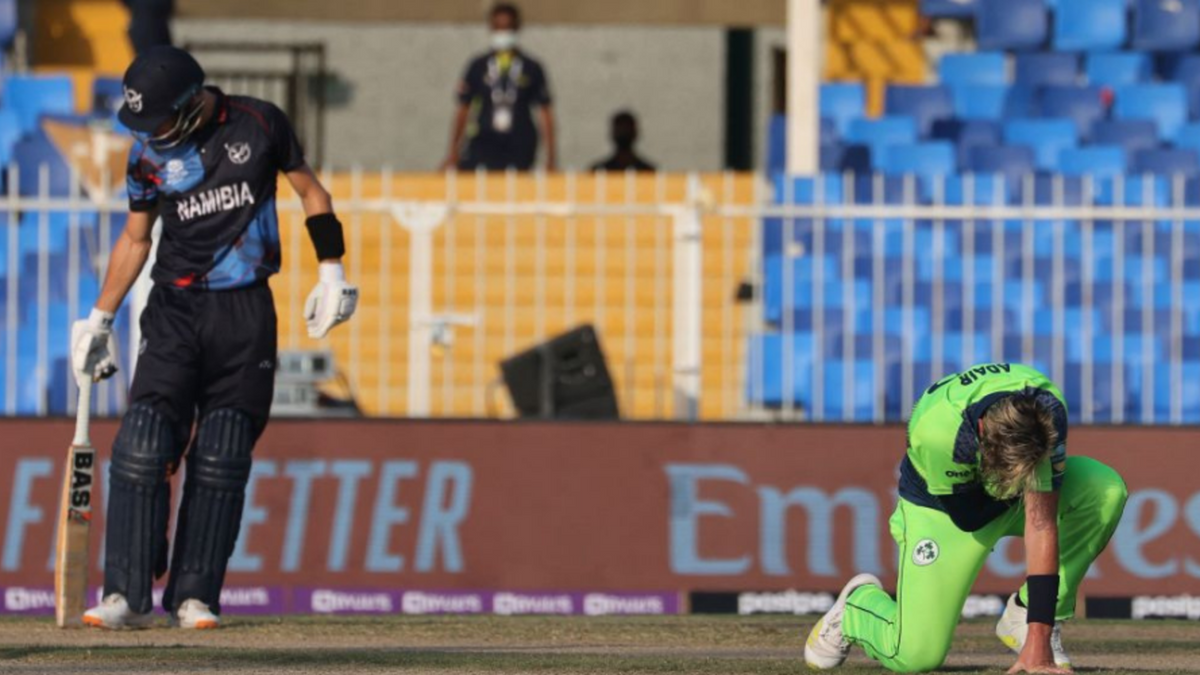
Divy Tripathi looks at the issues with the T20 World Cup, and potential fixes for the same.
Sign up to bet365 to be entered into a draw for the chance to win a Wisden Hoodie, terms and conditions apply, more information here. 18+ begambleaware.org
When T20 started out it was called a marketing gimmick. Similarly, the T20 World Cup was an effort to help the phenomenon reach a global audience. India’s surprise win in the 2007 edition of the tournament was one of the major factors in the early success of the IPL, and other major T20 leagues.
While the T20 format in itself has been widely successful in the form of its billion-dollar industry, experimental steps and global leagues, the T20 World Cup is in many ways, seemingly, living in the same old world. Let’s take a look at the issues with the T20 World Cup, and possible solutions.
Toss advantage
This bias was visible in other T20 World Cups as well, but it became exacerbated in this edition. The win/loss ratio for sides winning the toss in T20 World Cup 2016 was 1.75, in this edition of the World Cup it was 2.o – the most for any World Cup. This showed up in both the semi-finals and finals of the tournament.
But for a few tosses going the other way, we might have had a completely different winner. While, to some it may be a situation specifically related to the Asian conditions, the truth is that the 2012 edition in Sri Lanka had the lowest win/loss ratio for sides winning the toss.
It isn’t the easiest thing to counter the dew factor in these conditions. One of the solutions might be to hold day games in World Cups played at venues where dew might have a role to play. But then again it will be tough for that to actually happen, given how night matches are preferred as they garner greater audience participation.
Format troubles
The associate nations have always been at the sidelines of the main event, or worse, not even a part of them. The T20 format, with its all-embracing quality, was meant to be a solution to this problem. However, as one can see in the present format, the first round is merely a glorified second qualifier before the real contest kicks off in the form of Super 12s.
The Full Member nations not involved in the ‘first round’ are involved in their own set of warm-up matches even as the qualifiers are played out. This sends the signal to the associates that they are here to only make the numbers.
The 2024 edition of the T20 World Cup is all set to be a 20-team event. Maybe a better way going ahead would be to divide the teams into four groups of five, and the top two from each group can go ahead for the next round. Some have also made a case for quarter-finals – to increase the number of knockout games in the event.
Qualification scenarios
Based on the ICC rankings and their performance in the tournament, sides like India, Pakistan, Australia, England, etc. have qualified to the Super 12s of the next World Cup. Interestingly, Bangladesh too made it to the Super 12s, despite losing all their games in the Super 12s this year. On the other hand, West Indies, and the impressive Sri Lanka team have to play the first round in the next year’s tournament.
The above should be avoided. Sri Lanka, a side which threatened to beat a rampant England team, deserved to be rewarded for their form in the tournament, and with the ICC rankings often coming in for criticism, these are a poor method for deciding who qualifies for a global event.
Net run rate
While net run rate has long been used as a determining factor for qualification to the next round for teams tied on the same set of points, there are issues with the tiebreaker. A victorious side might end up with a lower NRR after a game, and vice versa. More so, the qualification scenarios often become entrenched in how a side fares against weaker teams, and sometimes a massive victory margin can become an unfair advantage.
There are different ways of splitting tied teams, including a bonus-points based system or an alternative system involving Duckworth-Lewis-Stern method.
Too many World Cups
The very next edition will take place in less than a year, and then it will return to the two-year model that was followed in the previous decade, albeit with a five-year gap between the events in 2016 and 2021.
This goes against the usual four-year gap that World Cups in other sports follow, and also dilutes the importance of winning a T20 World Cup trophy. Australia will be world champions for just over a year, unless they retain their crown.
Taking cricket’s own example, Sri Lanka, Australia etc. were able to stamp their authority on the cricketing world by living up to their title of ‘world champions’ in numerous tri-series and bilateral encounters after winning the ODI World Cups in the 90s. A contest could be billed as the home side versus the best in the world.
The same is not possible in T20I cricket if the World Cup is held every couple of years. The best way would be to hold it after a gap of four years, just like the ODI World Cup.








